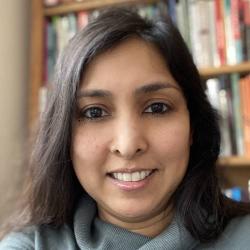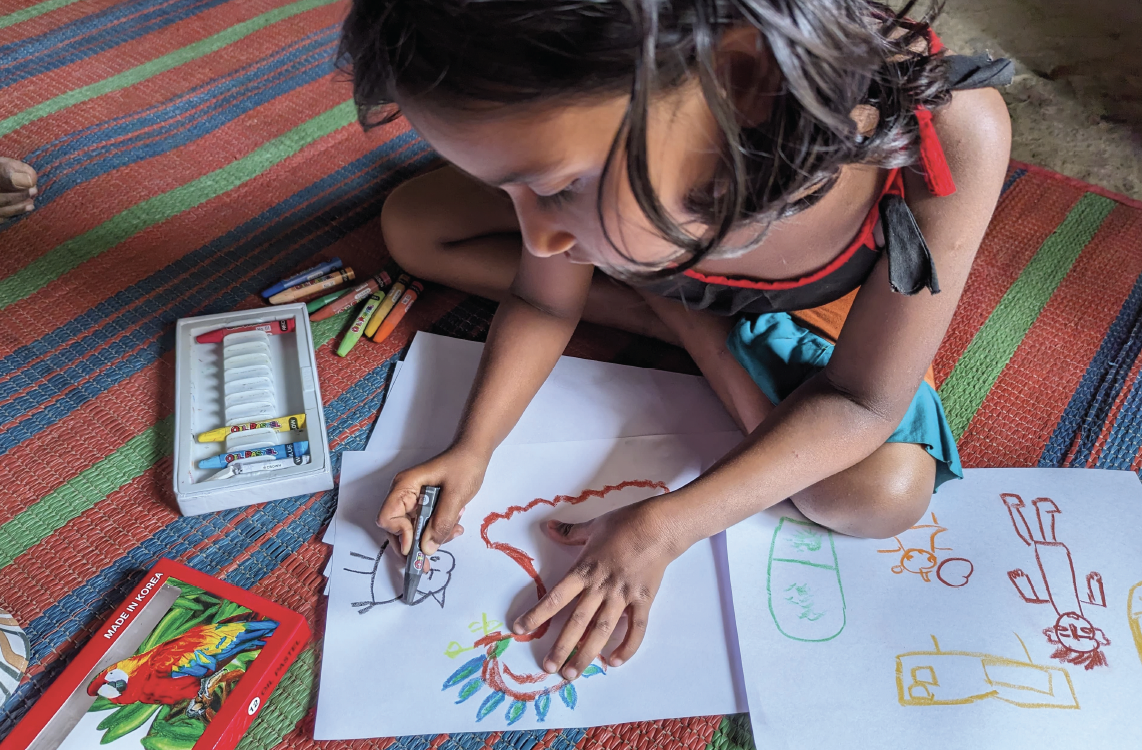This first case study in the “Unveiling worlds: Centering child voices in humanitarian contexts case study series” uses drawing and child-led conversations to illuminate young Rohingya children’s lived realities to inform humanitarian programs and policies.1 This qualitative study offers context-specific insights from children to inform policies and practices for governmental bodies, U.N. agencies and implementing NGOs. This approach is replicable, low-cost, and adaptable to any protracted emergency context. Children’s views, as highlighted in this research, are already changing how BRAC, a Global South-led international development agency, implements its programs. Additionally, to have a broader impact, BRAC2 has initiated discussions for program and policy modification based on this research with the Early Childhood Development (ECD) in emergencies coordination group3 and the Refugee Relief and Repatriation Commissioner within the Bangladesh Ministry of Disaster Management and Relief.
-
Acknowledgements and disclosures
The Brookings Institution is a nonprofit organization devoted to independent research and policy solutions. Its mission is to conduct high-quality, independent research and based on that research, to provide innovative, practical recommendations for policymakers and the public.
The conclusions and recommendations of any Brookings publication are solely those of its author(s), and do not reflect the views or policies of the Institution, its management, its other scholars, or the funders acknowledged below.
Brookings gratefully acknowledges the support of the LEGO Foundation.
Brookings recognizes that the value it provides is in its absolute commitment to quality, independence, and impact. Activities supported by its donors reflect this commitment.
-
Footnotes
- The research presented here is drawn from larger research called “My Play Life: A Qualitative Study of Children’s Play in Bangladesh,” an initiative by the BRAC Institute of Educational Development (BRAC IED) and the University of Cambridge and funded by the Lego Foundation. This research is not published.
- BRAC Institute for Educational Development (IED) is the research and technical arm of BRAC and has been leading these discussions with various stakeholders.
- The ECD in emergencies coordination group in the Rohingya camp includes BRAC and its affiliates such as BRAC-IED, Plan International, International Rescue Committee, Save the Children, and many local Bangladeshi groups.
The Brookings Institution is committed to quality, independence, and impact.
We are supported by a diverse array of funders. In line with our values and policies, each Brookings publication represents the sole views of its author(s).




